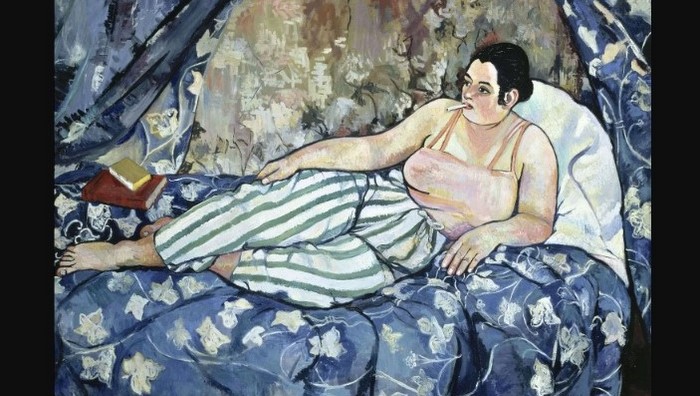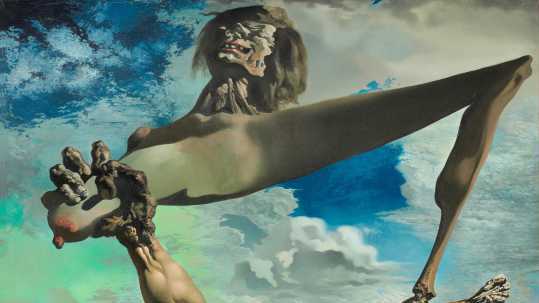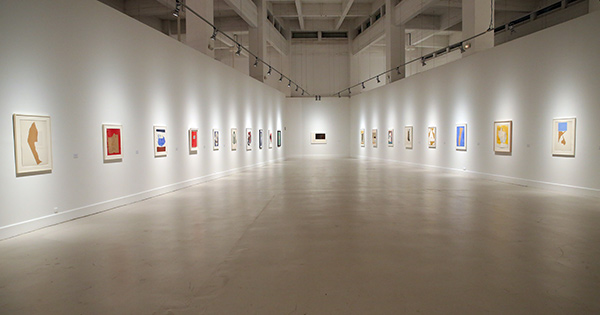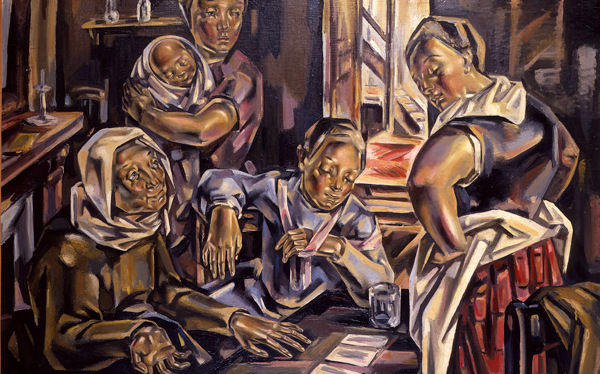The Centro de Arte Contemporáneo of Málaga is proud to present the exhibition Collages, featuring the work of Robert Motherwell. Curated by the CAC Málaga curatorial team, the show comprises 26 works made between 1960 and 1989.
The exhibition consists entirely of works on paper that explore the evolution of collage during Motherwell’s lifetime, illustrating his diverse approaches to the use of this technique. His work is characterised by his intuitive tearing methods, similar to the brushstrokes of an Abstract Expressionist. Motherwell’s collages are marked by the coexistence of different media and techniques, combining package labels, torn paper, cardboard and even a reused envelope with abstract forms.
“Painting is a medium in which the mind can actualize itself; it is a medium of thought,” the artist once remarked. “Thus painting, like music, tends to become its own content.”
Robert Motherwell is considered a leading collagist of the post-war period and one of the most important American artists of the 20th century.
The nearly thirty works on paper selected for this exhibition were produced during the most mature period of his artistic career, in the 1960s, 70s and 80s.
Motherwell’s exploration and use of collage throughout his lifetime sets him apart from other artists of his generation. For him, collage was more than just the arrangement of pasted, torn or cut pieces of paper.
The artist’s goal in these works was to create sensations with no prior point of reference, capable of moving spectators with something unprecedented. Collage let him express emotions through his compositions with materials and paint strokes similar to those of Abstract Expressionism.
The papers Motherwell used for his collages were mostly selected at random: it made no difference if they were bits of newspaper, labels, stickers, envelopes, stamps or music scores. The content of the texts had no specific relevance; his primary interest was in the font and its possibilities, as a way of documenting his daily life.
The most salient aspects of his compositions are texture and the careful positioning of the different pieces which he later tore, scratched or painted over, completing the process with complementary tones. Package labels, cardboard sheets and torn papers are arranged in strata or layers, and the result is the coexistence of support and medium.
In the early days, he was influenced by Henri Matisse, Paul Cézanne, Pablo Picasso, Joan Miró, Piet Mondrian and the papiers collés of Cubist artist Georges Braque.
Later, in the post-war period (1946), he distanced himself from Surrealism and began to develop a figurative style, filled with abstract and poetic symbols. In 1949 he produced works on the theme of Spain during its civil war.
Since his youth, Spain had held a special attraction for Motherwell, as he sympathised with the left-wing intellectuals of the Republican side and was affected by the fracture of the Spanish Civil War. These feelings inspired his series Elegy to the Spanish Republic.
The artist also paid tribute to the Spanish caves of Altamira, whose prehistoric paintings he had seen with fellow painter Helen Frankenthaler on their honeymoon in 1958. His Altamira No. 3 (1976) clearly reflects the rock art of Altamira and Lascaux in France.
Certain French influences are apparent in his most elemental compositions, constructed with a bare minimum of pieces. Motherwell’s clever use of torn papers along the edges or on the surface of his works, such as Midday Sun (1960/ca. 1985), denote his passion for this material and his commitment to Surrealist automatism.
Music and musical compositions also played an important role in his collages, as illustrated by several works in this show, such as The Red and Black No. 35 (1987/1988), The Red and Black No. 43 (1987/1988) and Night Music Opus No. 14 (1989).
In Bowes & Bowes Collage (1967), Untitled (1967) and Untitled (1975), the focal point of each composition is a used envelope, partial or intact, pasted over geometric shapes that offer a glimpse of the artist’s everyday life. The untitled work from 1975 also incorporates Franco-era stamps.
In Scarlet with Gauloises No. 15 (1972), we see a torn pack of Gauloises cigarettes underneath a canvas painted in red brushstrokes. Motherwell’s choice of theme and variation in this series reflects the fact that he had become increasingly involved in printmaking in the early 1970s. The same tobacco brand stands out against a blue and off-white background in Zig-Zag (1974), while the ochre-toned McCartney in Brazil (1978–1979) features a music score and the label of a Brazilian cigar brand, Dannemann Reynitas, and a cognac label can be seen in the work In Scarlet and Cognac (1973).
Figuration and abstraction take centre stage in Beige Figuration No. 3 (1967), In White with Beige No. 4 (1968), In Beige with Two Bands (1968), Figuration on Blue (1968) and Open with Figuration (1968), where bits of torn paper are pasted over beige, blue and white paint.
In White with Four Corners (1964) offers a figurative depiction of a female body, a woman’s torso made of torn pieces of white paper on an ochre background; similarly, In Pink and Green (1966) recalls Ingres’s Violin (1924) by Surrealist photographer Man Ray.
Open, Bolton Landing (1969) can be described as a rectangle on a canvas rendered in shades of black, almost like a funeral march. Bolton Landing was the home of his friend the sculptor David Smith, who died in a lorry accident. Motherwell had a special predilection for black.
The artist’s oeuvre reveals his familiarity with Matisse’s collage method, especially in the way he cut and organised physical additions to the composition, as in Cathedral II (1977).
The influence of French art and his time in Paris is particularly evident in L’Enfant du Paradis (1989). The title alludes to the famous 1945 film Les Enfants du Paradis directed by Marcel Carné, voted the greatest French film of all time in a poll of French critics.
Robert Motherwell (Aberdeen, Washington, 1915–Provincetown, Massachusetts, 1991) graduated from Stanford University in 1937 and later enrolled at Harvard University to pursue a post-graduate degree in Philosophy. Motherwell also briefly attended Columbia University in 1940.
His work has been shown individually and collectively at many international institutions, including Galerie Raymond Duncan (Paris), Peggy Guggenheim’s gallery The Art of This Century (New York), the Arts Club of Chicago, the San Francisco Museum of Modern Art, the Museum of Modern Art (New York), the Musée d’Art Moderne (Paris), the Royal Academy of Arts (London), the National Gallery of Art (Washington, DC) and the Albright-Knox Art Gallery (Buffalo, New York).
07 February–17 May 2020
Related Publications

Discover semi-abstract landscapes by Miska Mohmmed
April 24, 2024
Suzanne Valadon. A modern epic
April 23, 2024












